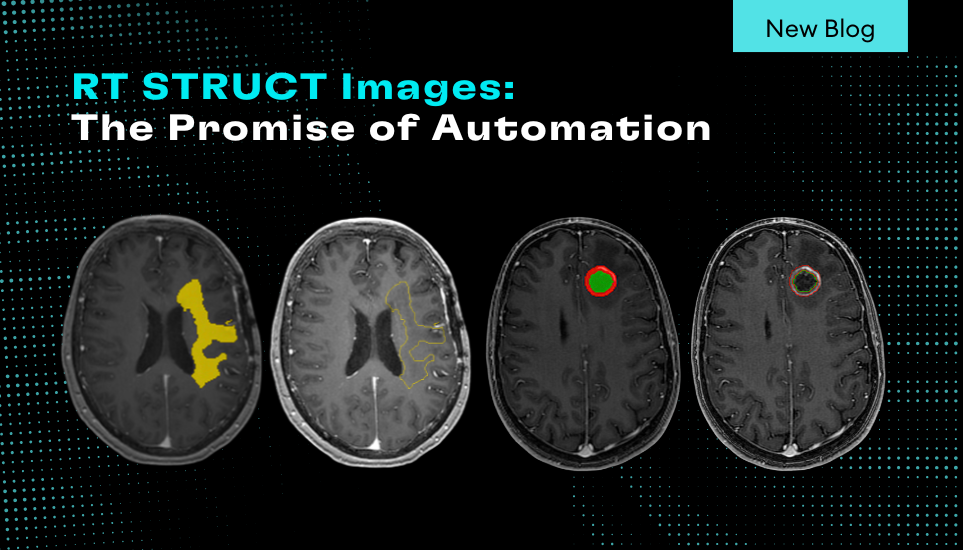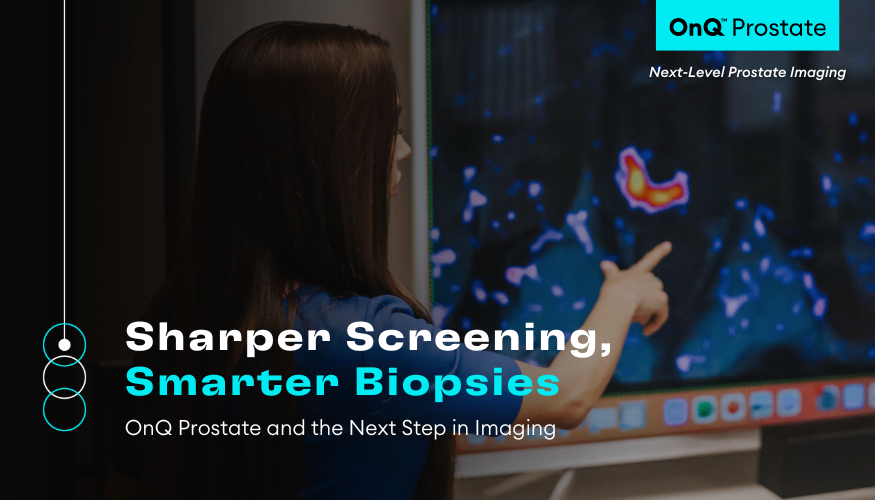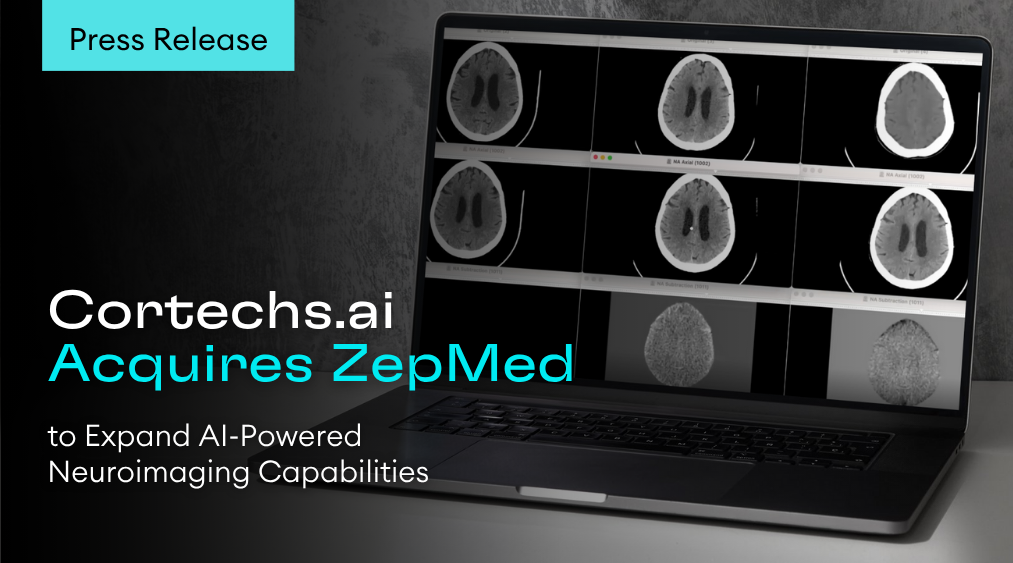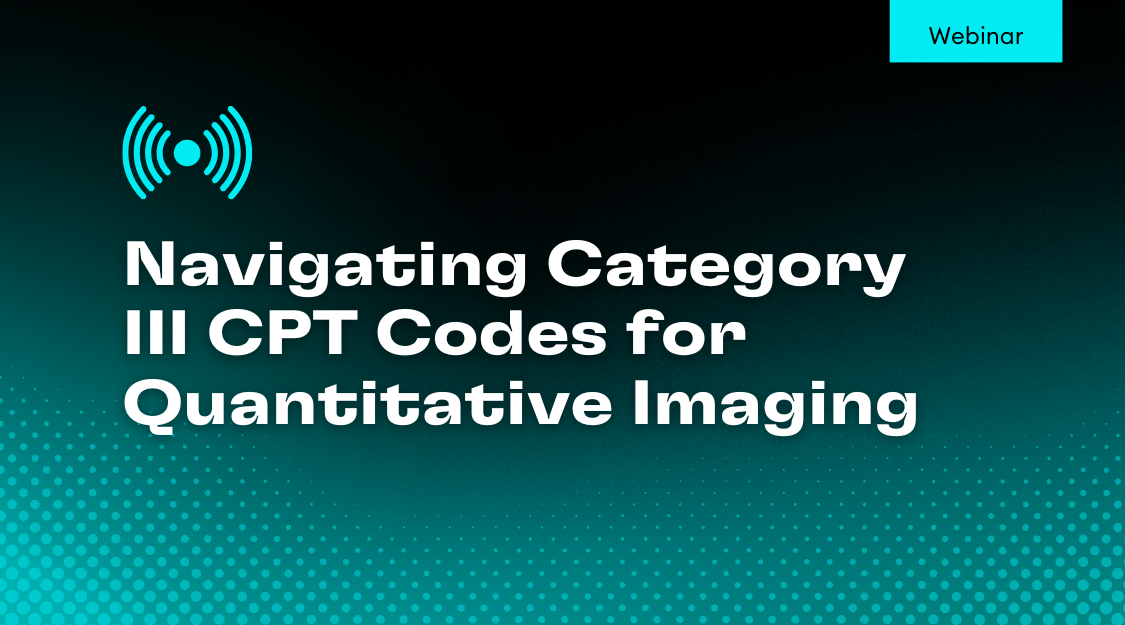As of January 1, 2024, two new Category III CPT codes (0865T and 0866T) were introduced to describe AI-assisted quantitative brain MRI analysis. These codes support procedures like those provided by NeuroQuant and represent a milestone in tracking the use of emerging neuroimaging tools. In this blog, we’ll break down what the codes mean and example clinical use cases that illustrate their value.
CPT Code Descriptions
- 0865T – Quantitative MRI analysis without a same-session MRI. This code is used when an analysis is performed on a previously acquired MRI. In other words, 0865T applies if no diagnostic MRI exam of the brain was performed during that same session. A typical scenario is analyzing a previously acquired MRI (from an earlier date or outside facility) using NeuroQuant or a similar tool to get volumetric data and lesion metrics. The code’s full descriptor emphasizes that it includes lesion identification, characterization, quantification, brain volume quantification and/or a severity score (when performed), along with data preparation, transmission, interpretation, and a report.,The code also requires that the analysis is reported when no concurrent brain MRI exam is done in that session.
- 0866T – Quantitative MRI analysis with a same-session MRI (add-on code). This is an add-on code used when quantitative analysis is performed in conjunction with a diagnostic brain MRI exam in the same session. In practice, this means the patient is getting a routine MRI of the brain (coded with the usual MRI codes 70551, 70552, 70553 for without contrast, with contrast, etc.), and during that visit the images are also processed with an AI tool like NeuroQuant for quantitative analysis. Code 0866T should always be billed in addition to the primary MRI code for that session. The descriptor of 0866T is similar to 0865T (including lesion detection, volumetric and severity measures, interpretation, and report) but explicitly notes it is “obtained with a diagnostic MRI examination of the brain.”
Clinical Use Cases for Quantitative MRI
1. Multiple Sclerosis (MS)
- QMRI quantifies T2/FLAIR lesion volume and tracks new or enlarging lesions over time.
- Accurately monitors disease activity and supports treatment escalation decisions.
- Quantifies whole-brain and regional atrophy, helping neurologists track neurodegeneration in alignment with NEDA-4 goals [1].
2. Alzheimer’s Disease & Cognitive Disorders
- Quantifies hippocampal and cortical atrophy—key biomarkers for AD diagnosis. [2,3].
- Supports early intervention and treatment selection, especially with anti-amyloid therapies. [4]
- Enhances safety monitoring by detecting ARIA-related microbleeds and edema [4].
3. Traumatic Brain Injury (TBI)
- Detects subtle atrophy and brain asymmetries that may go unnoticed visually.
- Helps differentiate post-traumatic changes from neurodegeneration. [5]
- Tracks longitudinal atrophy and microhemorrhages associated with diffuse axonal injury.
4. Brain Tumors (Neuro-Oncology)
- Provides 3D volumetric tumor measurements; more reliable than 2D estimates. [6]
- Tracks both enhancing tumor and FLAIR abnormality to guide treatment.
5. Epilepsy
- Improves detection of mesial temporal sclerosis via automated hippocampal volumetry [7].
- Useful for “non-lesional” cases where visual MRI appears normal.
6.Small Vessel Disease (Microvascular Ischemic Disease)
- Automatically quantifies white matter hyperintensities (WMH) and microbleeds.
- Provides a standardized, objective measure of small vessel disease burden.
- Enhances diagnosis and prognosis for vascular cognitive impairment.
Billing Overview
These Category III codes are designed to support data collection and appropriate use—not guarantee payment. Here’s what you should know:
- Use 0865T when no MRI is performed during the session.
- Use +0866T alongside MRI codes (70551–70553) when analysis occurs during an imaging session.
- Documentation must include the quantitative report and interpretation by a physician.
Billing and Documentation Overview
To empower your practice in using these codes correctly, here are some key tips and takeaways:
- Educate your coding/billing staff: Ensure that your coders know when to apply 0865T vs 0866T. A quick summary sheet can help – e.g., “0865T = quantitative brain MRI analysis without MRI same day; 0866T = with MRI same day (add-on to 70551/70552/70553)”. This will prevent inadvertent coding errors such as billing the wrong code alongside an MRI.
- Secure prior authorization when required: As noted, many payers now require PA for these codes. Develop a checklist for your authorization team to include the rationale (diagnosis, why quantitative analysis is needed) and to use the correct CPT code in the request. If a payer does not recognize the code at all, you might get a denial stating “code not covered” – in such cases, an appeal with clinical justification or a physician-to-physician discussion might help. It’s better to know before doing the analysis whether the service will be covered, so do check the policies or ask the insurer.
- Document medical necessity: In the radiology report or referring physician’s notes, clearly document why quantitative analysis was helpful for the case. Such documentation not only improves patient care but will support your billing if there’s ever a payer question. Some MACs specifically require documentation submissions for Category III codes to avoid automatic denial, so having that justification readily available is crucial.
- Attach reports to claims if possible: Some billing systems allow you to attach the NeuroQuant analysis report or note when submitting claims electronically. If a claim for 0865T/0866T is denied as investigational, you can resubmit with supporting documentation and a letter explaining the clinical need and pointing out that AMA has provided a CPT code (indicating recognition of the service). While this doesn’t guarantee payment, it demonstrates good faith and thoroughness. Over time, if enough providers successfully justify the service, payers may reconsider blanket non-coverage.
Conclusion
CPT codes 0865T and 0866T allow clinicians to bill for advanced quantitative brain MRI services like NeuroQuant, supporting the early diagnosis and treatment monitoring of neurologic diseases. By following best practices in coding, documentation, and payer engagement, clinicians can expand access to these valuable tools while helping to build the case for future permanent reimbursement. This material and the information contained herein is for general information purposes only and is not intended, and does not constitute, legal, reimbursement, business, clinical, or other advice.
For more information on NeuroQuant or for reimbursement support, contact reimbursementsupport@cortechs.ai
Citations:
[1] Kappos L, De Stefano N, Freedman MS, Cree BA, Radue EW, Sprenger T, Sormani MP, Smith T, Häring DA, Piani Meier D, Tomic D. Inclusion of brain volume loss in a revised measure of ‘no evidence of disease activity’ (NEDA-4) in relapsing-remitting multiple sclerosis. Mult Scler. 2016 Sep;22(10):1297-305.
[2] den Heijer T, Geerlings MI, Hoebeek FE, Hofman A, Koudstaal PJ, Breteler MM. Use of hippocampal and amygdalar volumes on magnetic resonance imaging to predict dementia in cognitively intact elderly people. Arch Gen Psychiatry. 2006 Jan;63(1):57-62.
[3] Jack CR Jr, Petersen RC, Xu YC, O’Brien PC, Smith GE, Ivnik RJ, Boeve BF, Waring SC, Tangalos EG, Kokmen E. Prediction of AD with MRI-based hippocampal volume in mild cognitive impairment. Neurology. 1999 Apr 22;52(7):1397-403.
[4] Sims JR, Zimmer JA, Evans CD, Lu M, Ardayfio P, Sparks J, Wessels AM, Shcherbinin S, Wang H, Monkul Nery ES, Collins EC, Solomon P, Salloway S, Apostolova LG, Hansson O, Ritchie C, Brooks DA, Mintun M, Skovronsky DM; TRAILBLAZER-ALZ 2 Investigators. Donanemab in Early Symptomatic Alzheimer Disease: The TRAILBLAZER-ALZ 2 Randomized Clinical Trial. JAMA. 2023 Aug 8;330(6):512-527.
[5] Cole JH, Leech R, Sharp DJ; Alzheimer’s Disease Neuroimaging Initiative. Prediction of brain age suggests accelerated atrophy after traumatic brain injury. Ann Neurol. 2015 Apr;77(4):571-81.
[6] Aiudi D, Iacoangeli A, Dobran M, Polonara G, Chiapponi M, Mattioli A, Gladi M, Iacoangeli M. The Prognostic Role of Volumetric MRI Evaluation in the Surgical Treatment of Glioblastoma. J Clin Med. 2024 Feb 1;13(3):849.
[7] Coan AC, Kubota B, Bergo FP, Campos BM, Cendes F. 3T MRI quantification of hippocampal volume and signal in mesial temporal lobe epilepsy improves detection of hippocampal sclerosis. AJNR Am J Neuroradiol. 2014 Jan;35(1):77-83.






